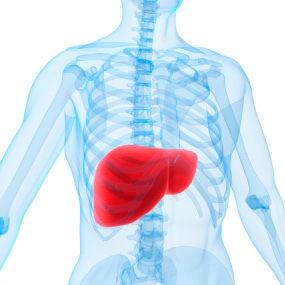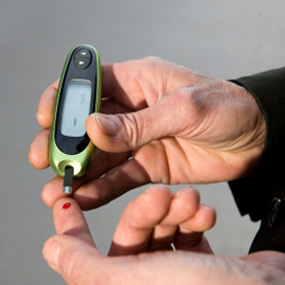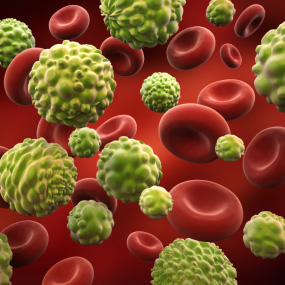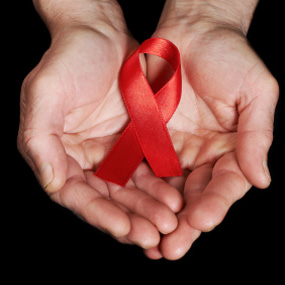You’re Not Invincible
If you take better care of your car or favorite gadget than your body, you aren’t alone. According to the Men’s Health Network, a lack of awareness, weak health education, and unhealthy work and personal lifestyles have caused a steady deterioration of the well-being of American men. Visit your medical provider to learn how you can reduce your risk of common conditions facing men, such as cancer, depression, heart disease, and respiratory diseases.
1. Heart Health
 Heart disease comes in many forms. All of its forms can lead to serious, fatal complications if undetected. The American Heart Association states that more than one in three adult men have some form of cardiovascular disease. African-American men account for 100,000 more cardiovascular disease deaths than Caucasian men.
Heart disease comes in many forms. All of its forms can lead to serious, fatal complications if undetected. The American Heart Association states that more than one in three adult men have some form of cardiovascular disease. African-American men account for 100,000 more cardiovascular disease deaths than Caucasian men.
Stroke targets more than 3 million men. High blood pressure is common in males under the age of 45, according to the American Heart Association. Routine checkups can help keep that heart beating. Your doctor can calculate your risk for cardiovascular disease based on several risk factors, including your cholesterol, blood pressure, and smoking habits
2. COPD And Other Respiratory Diseases
 Many respiratory diseases start with an innocent “smoker’s cough.” Over time, that cough can lead to life-threatening conditions, such as lung cancer, emphysema, or COPD. All of these conditions interfere with your ability to breathe.
Many respiratory diseases start with an innocent “smoker’s cough.” Over time, that cough can lead to life-threatening conditions, such as lung cancer, emphysema, or COPD. All of these conditions interfere with your ability to breathe.
According to the American Lung Association, each year more men are diagnosed with and develop lung cancer than in years past. African-American men have a higher risk of dying from the disease compared to other racial or ethnic groups. While exposure to occupational hazards like asbestos increases your risk, smoking remains the leading cause of lung cancer. If you have smoked for more than 30 years, a low-dose CT scan maybe prudent to screen for lung cancer.
3. Alcohol: Friend or Foe?
 According to the Centers for Disease Control and Prevention (CDC), men face higher rates of alcohol-related deaths and hospitalizations than women do. Men binge drink twice as much as women. They are also prone to increased aggression and sexual assault against women.
According to the Centers for Disease Control and Prevention (CDC), men face higher rates of alcohol-related deaths and hospitalizations than women do. Men binge drink twice as much as women. They are also prone to increased aggression and sexual assault against women.
Alcohol consumption increases your risk for cancer of the mouth, throat, esophagus, liver, and colon. Alcohol also interferes with testicular function and hormone production. This can result in impotence and infertility. According to the CDC, men are more likely than women to commit suicide. They also are more likely to have been drinking prior to doing so.
4. Depression and Suicide
 Researchers at The National Institute of Mental Health (NIMH) estimate that at least 6 million men suffer from depressive disorders, including suicidal thoughts, annually.Some ways to combat depression include:
Researchers at The National Institute of Mental Health (NIMH) estimate that at least 6 million men suffer from depressive disorders, including suicidal thoughts, annually.Some ways to combat depression include:
- getting regular exercise, even just going for routine walks around your neighborhood
- journaling or writing down your thoughts
- communicating openly with friends and family
- seeking professional help
5. Unintentional Injuries and Accidents
 The CDC lists unintentional injury as a leading cause of death for men in 2006. This includes drowning, traumatic brain injuries, and fireworks-related mishaps.
The CDC lists unintentional injury as a leading cause of death for men in 2006. This includes drowning, traumatic brain injuries, and fireworks-related mishaps.
Motor vehicle death rates for male drivers and passengers ages 15 to 19 were almost twice that of females in 2006. Male workers incurred 92 percent of the 5,524 total reported fatal occupational injuries. Remember, safety first.
6. Liver disease
 Your liver is the size of a football. It helps you digest food and absorb nutrients. It also rids your body of toxic substances. Liver disease includes conditions such as:
Your liver is the size of a football. It helps you digest food and absorb nutrients. It also rids your body of toxic substances. Liver disease includes conditions such as:
- cirrhosis
- viral hepatitis
- autoimmune or genetic liver diseases
- bile duct cancer
- liver cancer
- alcoholic liver disease
According to the American Cancer Society, alcohol and tobacco use increases your chance of developing liver disease.
7. Diabetes
 If left untreated, diabetes can lead to nerve and kidney damage, heart disease and stroke, and even vision problems or blindness. Men with diabetes face a risk of lower testosterone levels and sexual impotence. This can lead to increased depression or anxiety.
If left untreated, diabetes can lead to nerve and kidney damage, heart disease and stroke, and even vision problems or blindness. Men with diabetes face a risk of lower testosterone levels and sexual impotence. This can lead to increased depression or anxiety.
The American Diabetes Association (ADA) celebrates today’s “modern man” as someone who is more aware of his blood sugar health. The ADA recommends that men “get out, get active, and get informed.” The best way to control your diabetes is to eat healthy and exercise. If you have a family history of diabetes, it is important to see your doctor to have periodic screenings for diabetes.
8. Influenza and Pneumonia
 Influenza and pneumococcal infection are two leading health risks for men. Men who have compromised immune systems due to COPD, diabetes, congestive heart failure, sickle cell anemia, AIDS, or cancer are more susceptible to these illnesses.
Influenza and pneumococcal infection are two leading health risks for men. Men who have compromised immune systems due to COPD, diabetes, congestive heart failure, sickle cell anemia, AIDS, or cancer are more susceptible to these illnesses.
Men are about 25 percent more likely to die from these diseases than women, according to the American Lung Association. To prevent against influenza and pneumonia, the American Lung Association recommends vaccination.
9. Skin Cancer
 According to the Skin Cancer Foundation, two-thirds of melanoma deaths in 2013 were men. This is more than twice the rate of women. Sixty percent of all melanoma deaths were white men over the age of 50.
According to the Skin Cancer Foundation, two-thirds of melanoma deaths in 2013 were men. This is more than twice the rate of women. Sixty percent of all melanoma deaths were white men over the age of 50.
You can help protect against skin cancer by wearing long sleeves and pants, hats with wide brims, sunglasses, and sunscreen when outdoors. You can also lower your risk of skin cancer by avoiding exposure to UV light sources, such as tanning beds or sunlamps.
10. HIV and AIDS
 Men who are infected with HIV may not realize it, as initial symptoms may mimic a cold or flu. As of 2010, men account for 76 percent of people infected with HIV, according to the CDC.
Men who are infected with HIV may not realize it, as initial symptoms may mimic a cold or flu. As of 2010, men account for 76 percent of people infected with HIV, according to the CDC.
The CDC goes on to state that men who have sex with men account for most new and existing HIV infections. African-American men have the highest rate of new HIV infection among all men.
Become proactive
 Now that you know about the top 10 health risks that affect men, the next step is to change your habits and become proactive about your health.
Now that you know about the top 10 health risks that affect men, the next step is to change your habits and become proactive about your health.
Addressing your health can be scary, but avoiding it altogether can be deadly. The many organizations cited in this slideshow offer information, resources, and support if you are experiencing any symptoms, feel you may have a condition, or just want to get a checkup.
Sources & References
Depression in men. (n.d.). Retrieved from http://www.nimh.nih.gov/health/topics/men-and-mental-health/depression-in-men.shtml
Excessive alcohol use and risks to men’s health. (2016, March 7). Retrieved from http://www.cdc.gov/alcohol/fact-sheets/mens-health.htm
Goals and strategy. (n.d.). Retrieved from http://www.menshealthnetwork.org/goals
HIV among men in the United States. (2015, April 15). Retrieved from http://www.cdc.gov/hiv/group/gender/men/index.html
Liver cancer risk factors. (2016, April 28). Retrieved from http://www.cancer.org/cancer/livercancer/detailedguide/liver-cancer-risk-factors
Lung cancer fact sheet. (n.d.). Retrieved from http://www.lung.org/lung-health-and-diseases/lung-disease-lookup/lung-cancer/learn-about-lung-cancer/lung-cancer-fact-sheet.html#Gender_Differences
(n.d.). Retrieved fromhttp://www.diabetes.org/living-with-diabetes/treatment-and-care/men/
Men and cardiovascular disease. (2013). Retrieved fromhttp://www.heart.org/idc/groups/heart-public/@wcm/@sop/@smd/documents/downloadable/ucm_319573.pdf
Men’s health at CDC. (2010, June 14). Retrieved from http://www.cdc.gov/Features/MensHealthatCDC/
Swetter, S. M., Clarke, C. A., & Keegan, T. H. M. (2014, June-August). Why do men have worse melanoma survival than women? Is it behavior, biology, or both?Skin Cancer Foundation: The melanoma letter, 32(2). Retrieved from http://www.skincancer.org/publications/the-melanoma-letter/summer-2014-vol-32-no-2/men
Trends in pneumonia and influenza morbidity and mortality. (2015, November). Retrieved from http://www.lung.org/assets/documents/research/pi-trend-report.pdf



